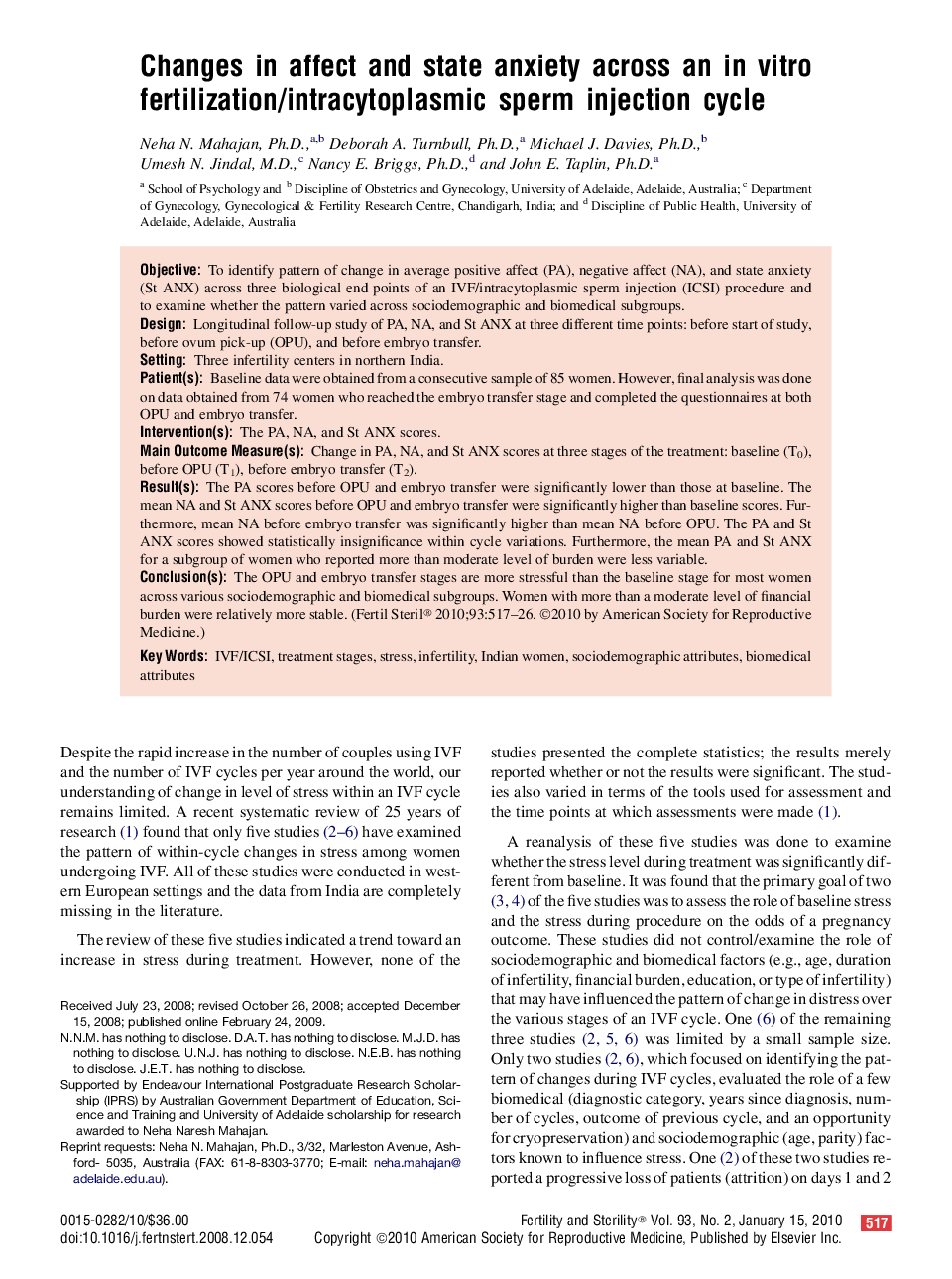| Article ID | Journal | Published Year | Pages | File Type |
|---|---|---|---|---|
| 3933667 | Fertility and Sterility | 2010 | 10 Pages |
ObjectiveTo identify pattern of change in average positive affect (PA), negative affect (NA), and state anxiety (St ANX) across three biological end points of an IVF/intracytoplasmic sperm injection (ICSI) procedure and to examine whether the pattern varied across sociodemographic and biomedical subgroups.DesignLongitudinal follow-up study of PA, NA, and St ANX at three different time points: before start of study, before ovum pick-up (OPU), and before embryo transfer.SettingThree infertility centers in northern India.Patient(s)Baseline data were obtained from a consecutive sample of 85 women. However, final analysis was done on data obtained from 74 women who reached the embryo transfer stage and completed the questionnaires at both OPU and embryo transfer.Intervention(s)The PA, NA, and St ANX scores.Main Outcome Measure(s)Change in PA, NA, and St ANX scores at three stages of the treatment: baseline (T0), before OPU (T1), before embryo transfer (T2).Result(s)The PA scores before OPU and embryo transfer were significantly lower than those at baseline. The mean NA and St ANX scores before OPU and embryo transfer were significantly higher than baseline scores. Furthermore, mean NA before embryo transfer was significantly higher than mean NA before OPU. The PA and St ANX scores showed statistically insignificance within cycle variations. Furthermore, the mean PA and St ANX for a subgroup of women who reported more than moderate level of burden were less variable.Conclusion(s)The OPU and embryo transfer stages are more stressful than the baseline stage for most women across various sociodemographic and biomedical subgroups. Women with more than a moderate level of financial burden were relatively more stable.
